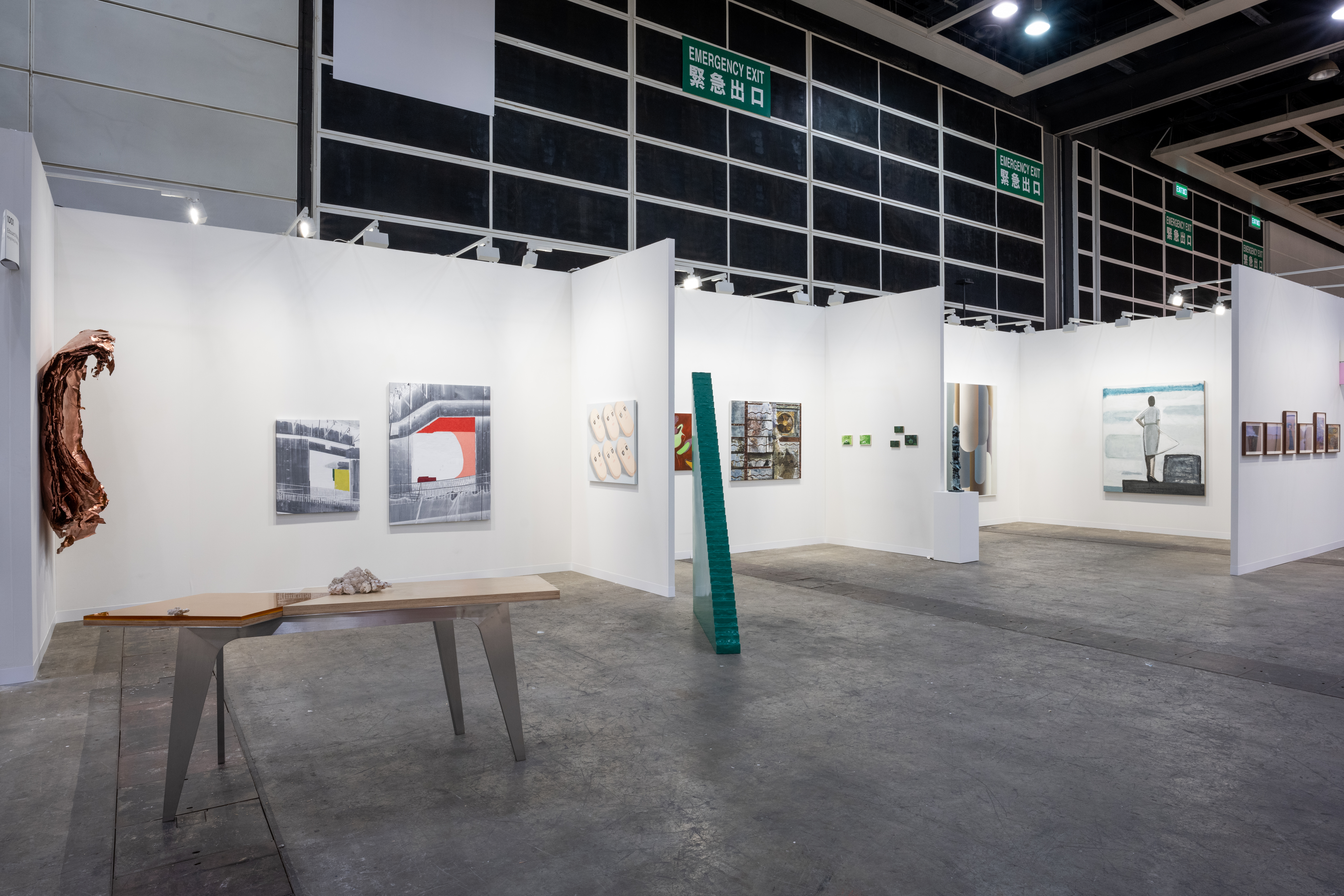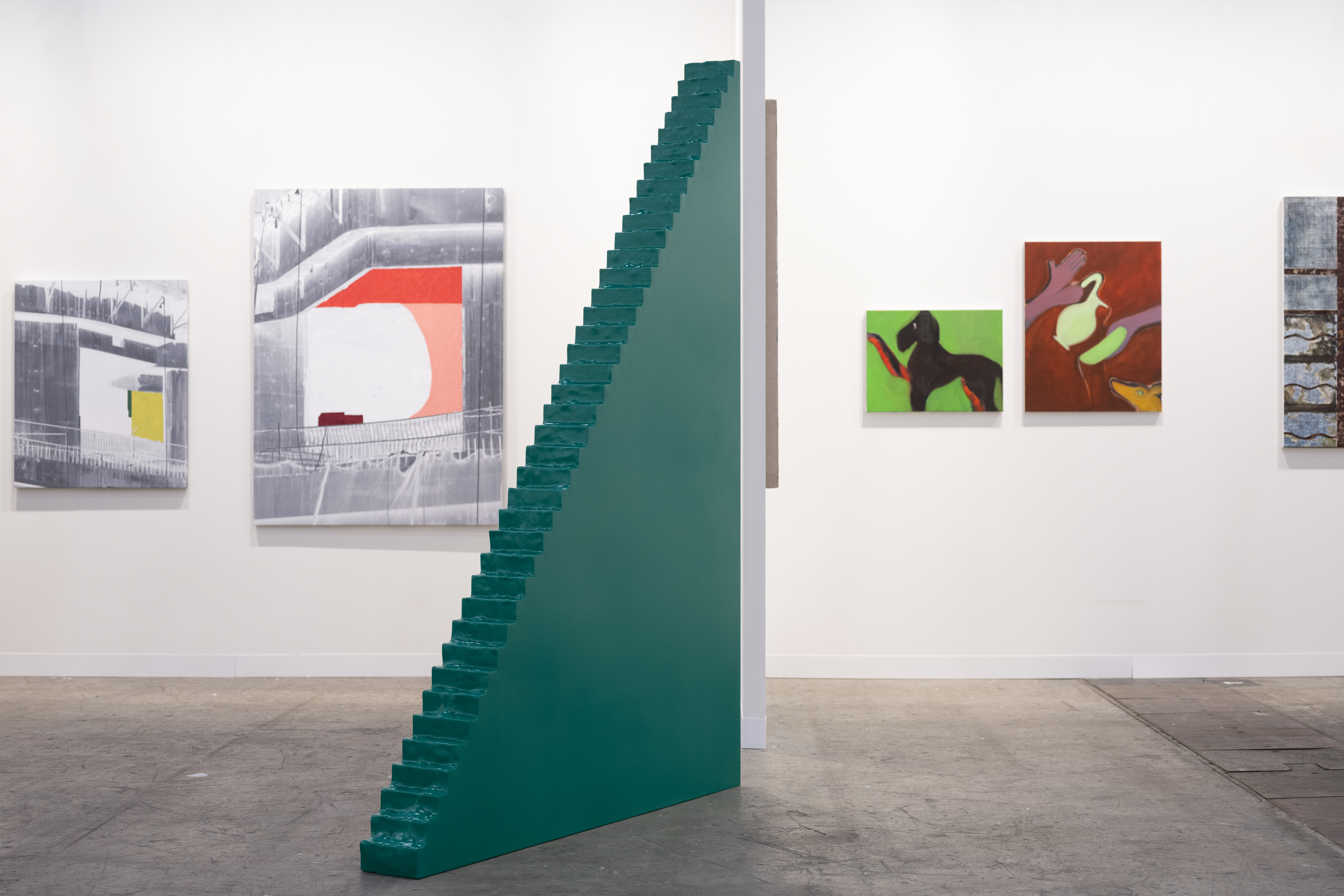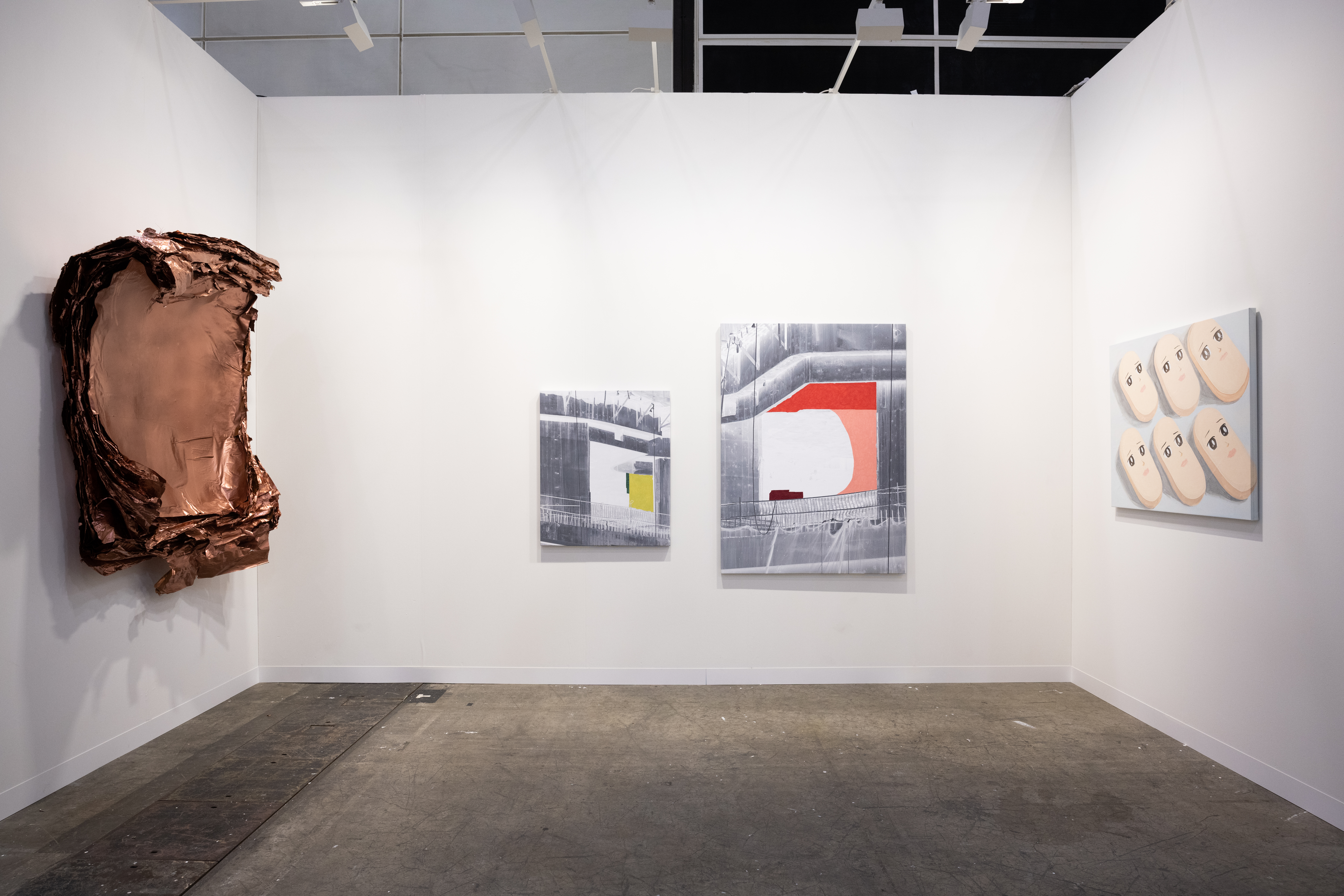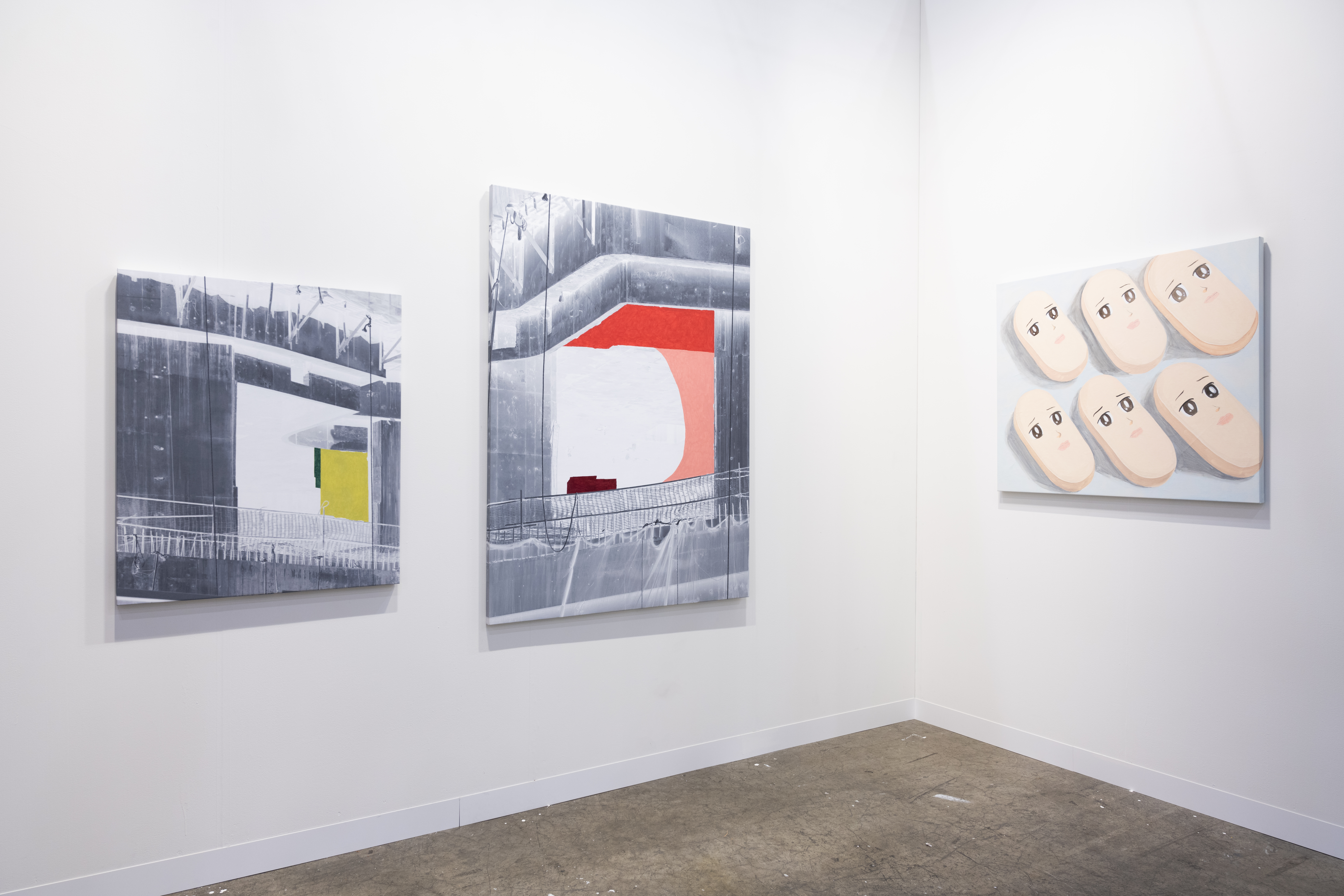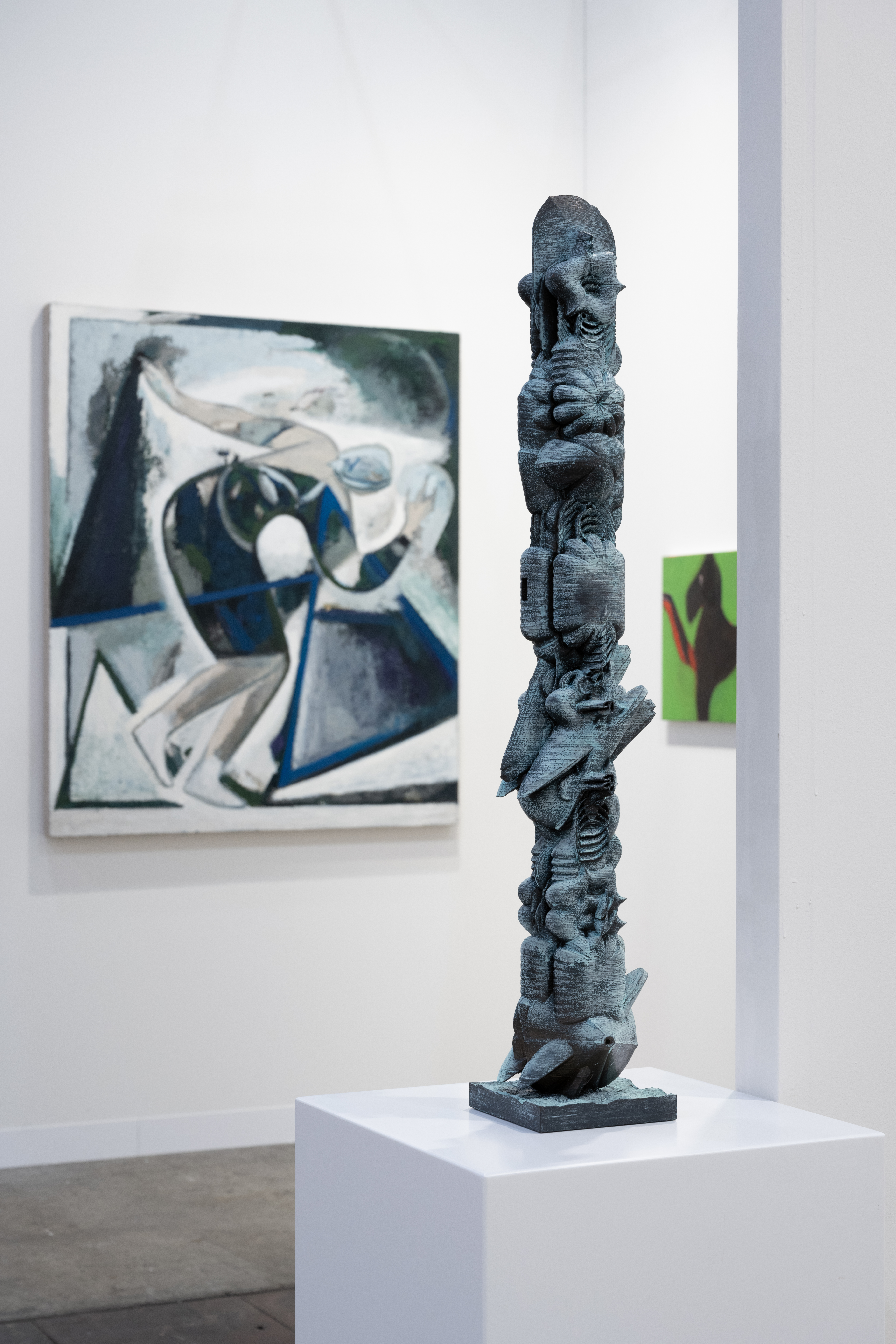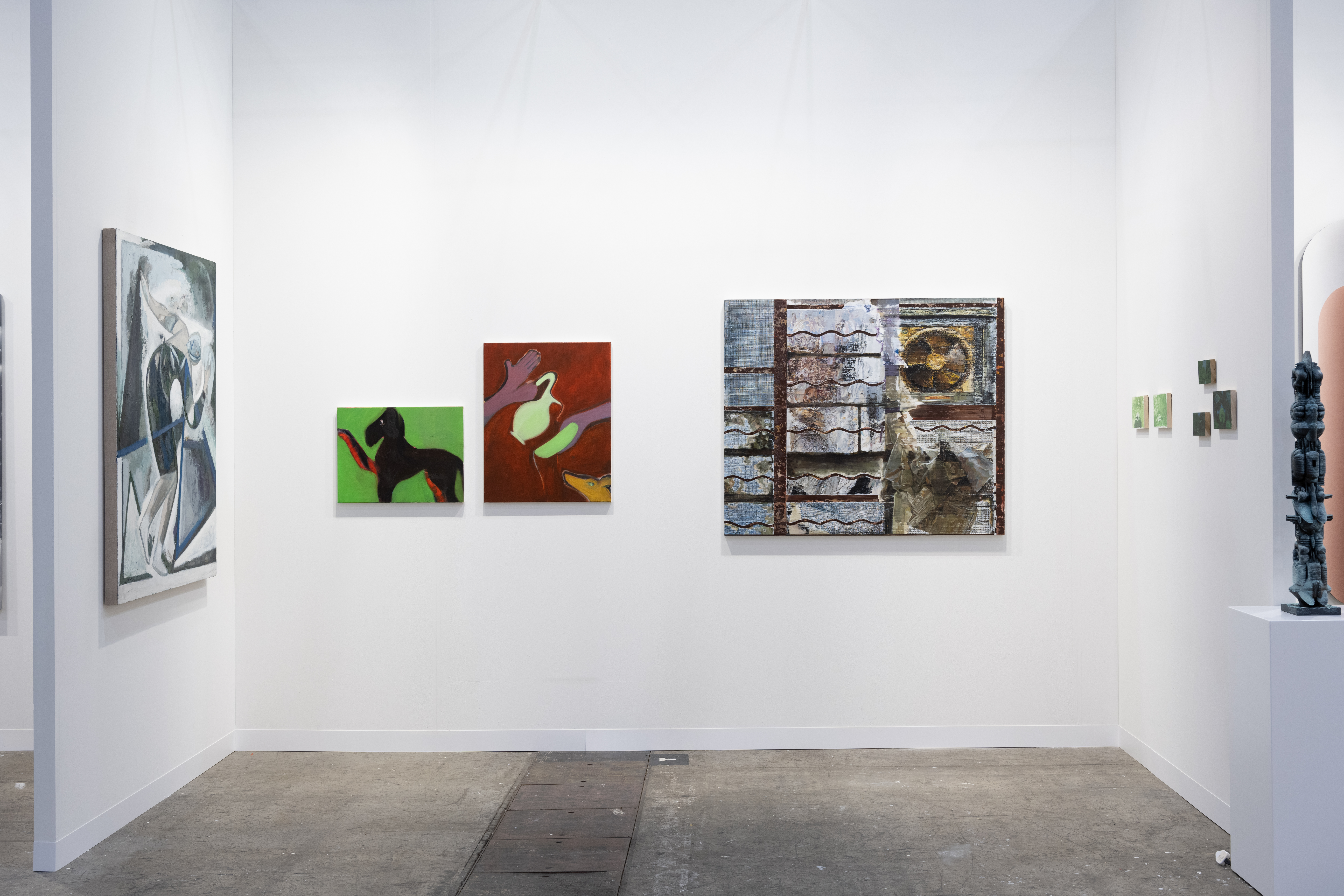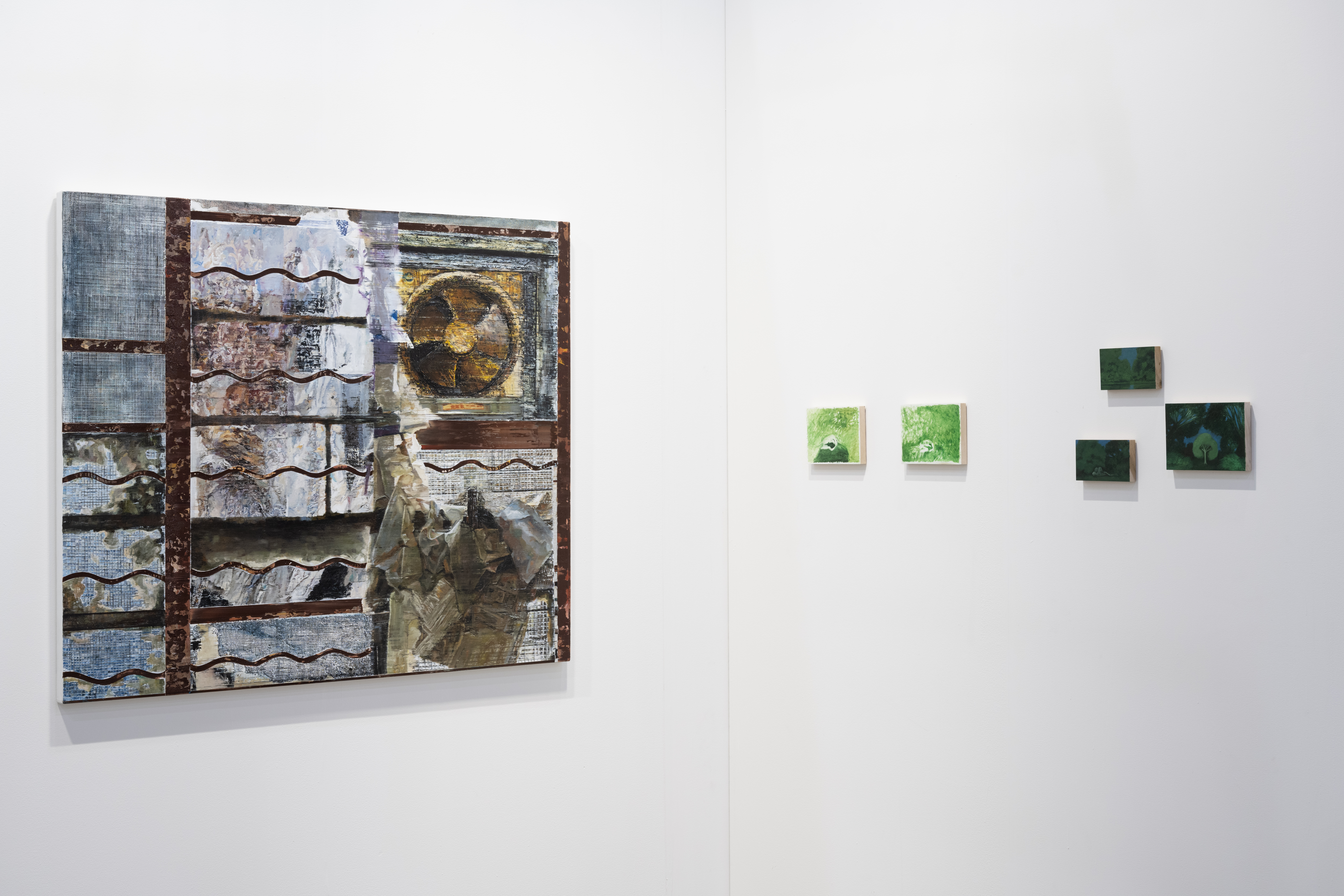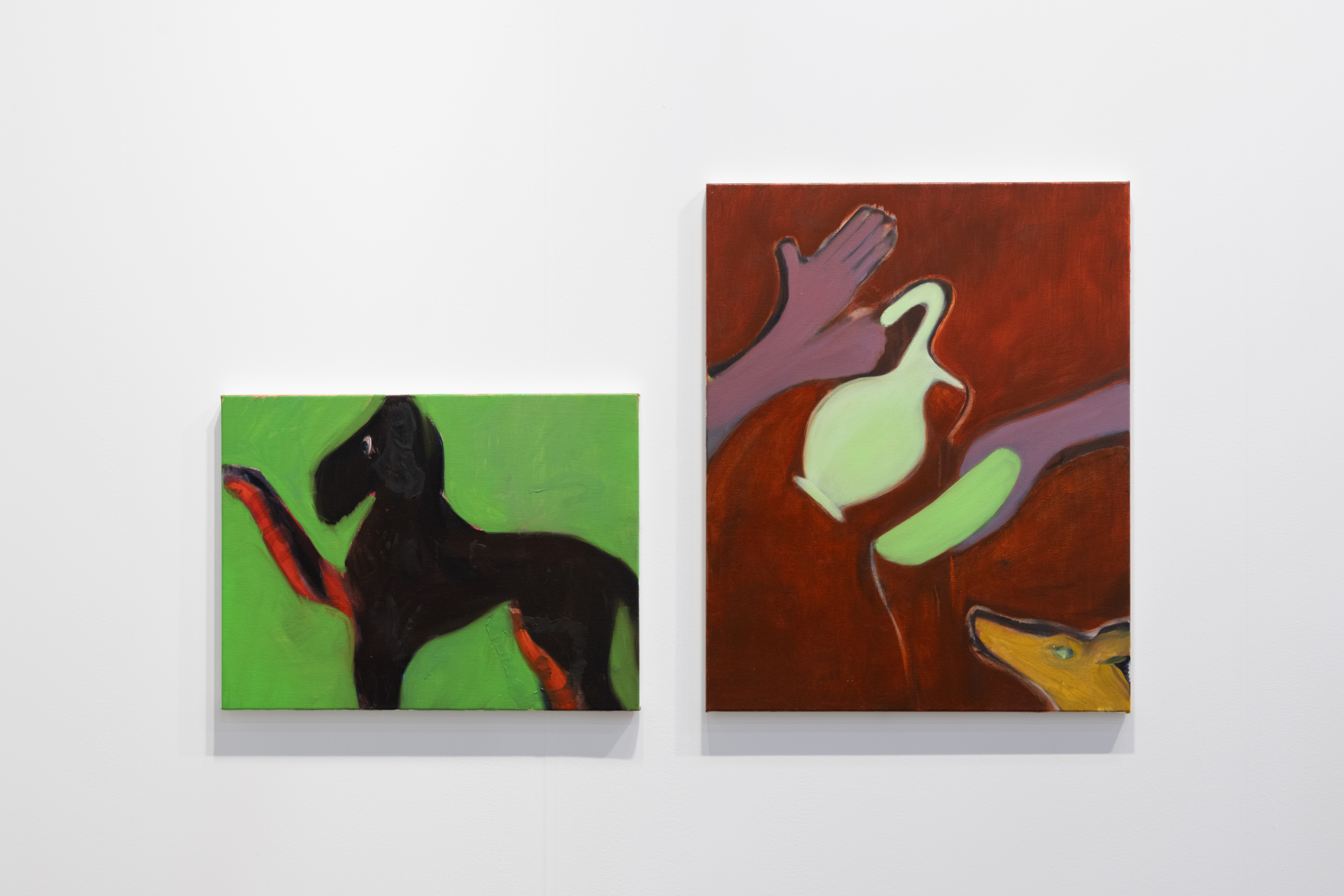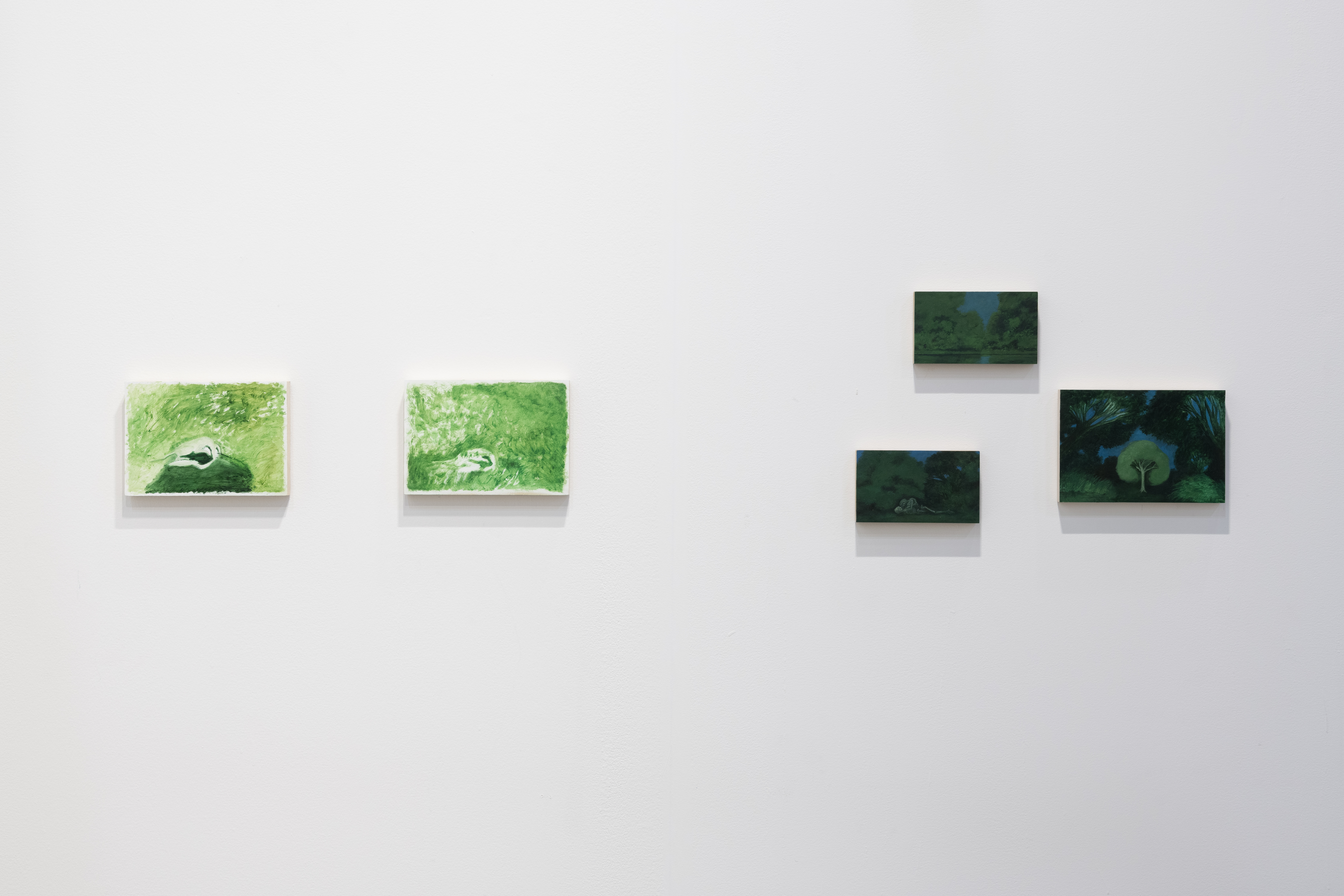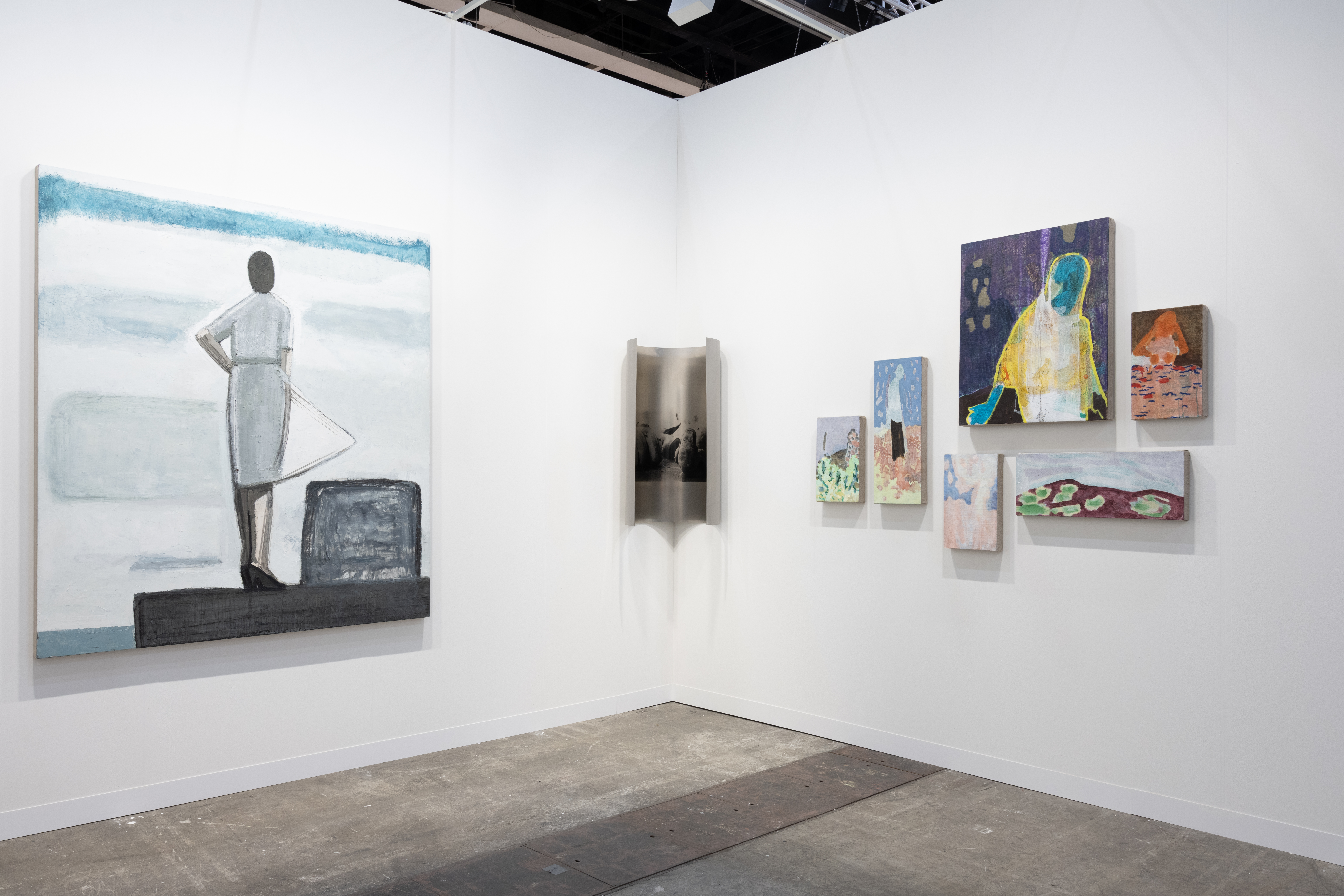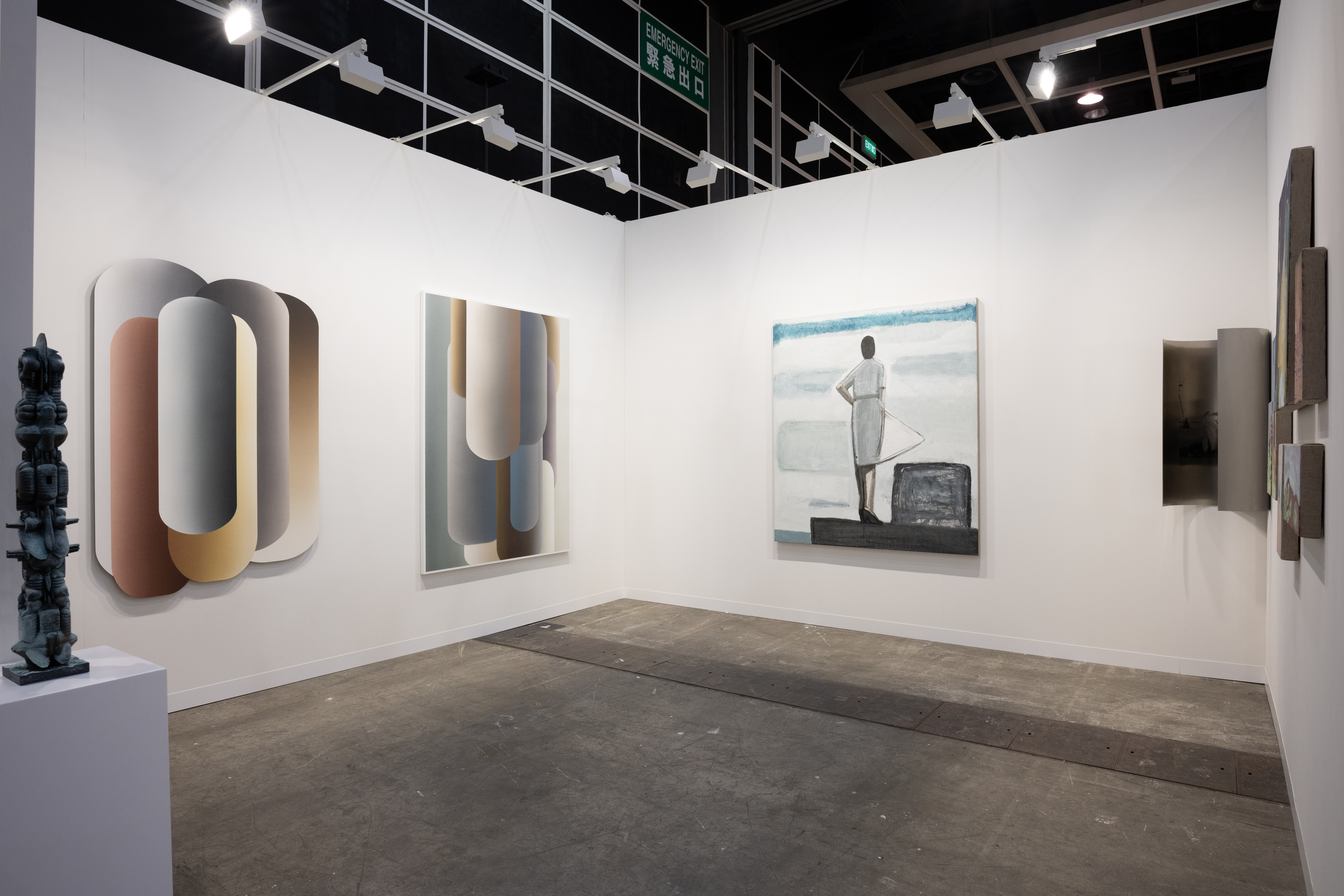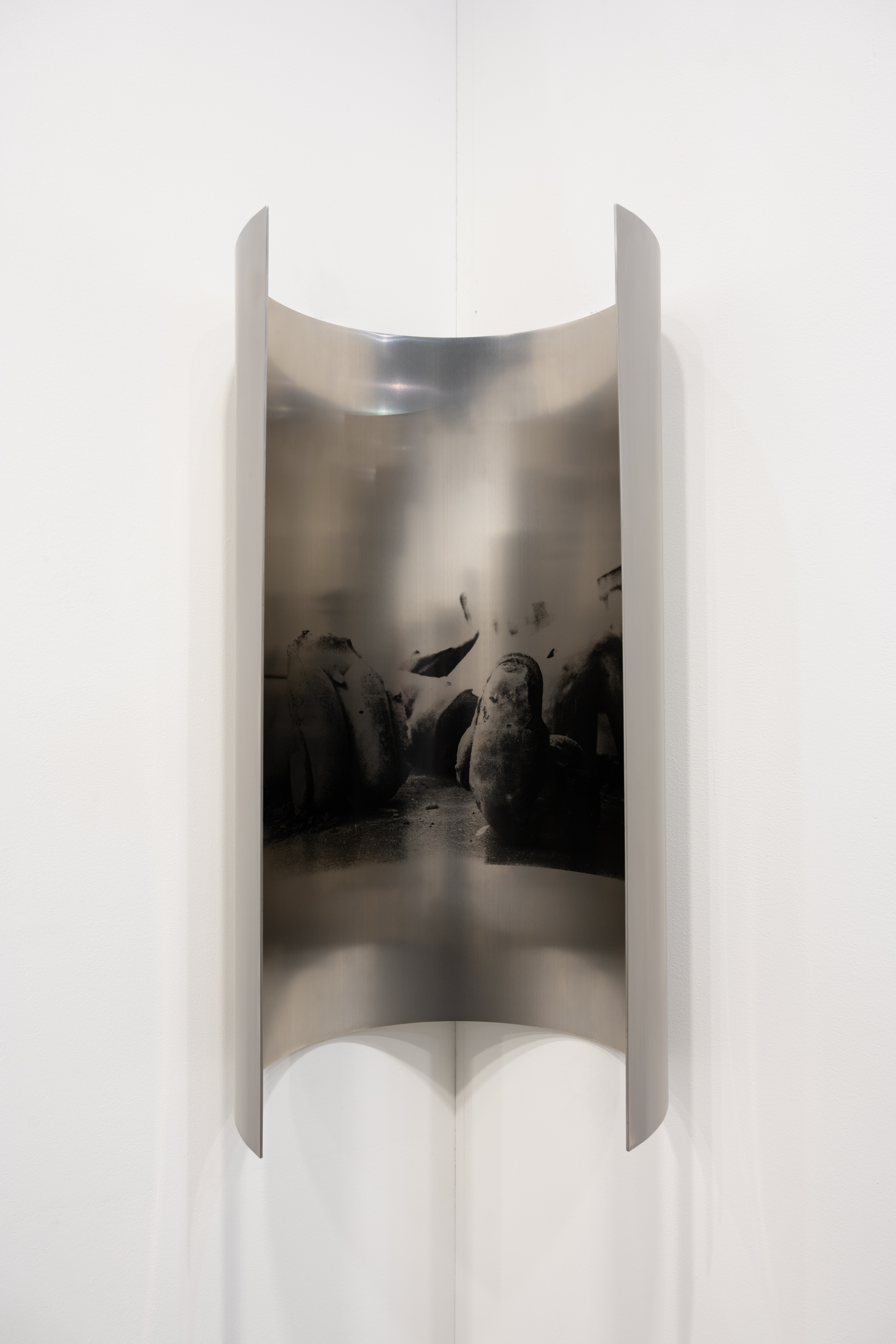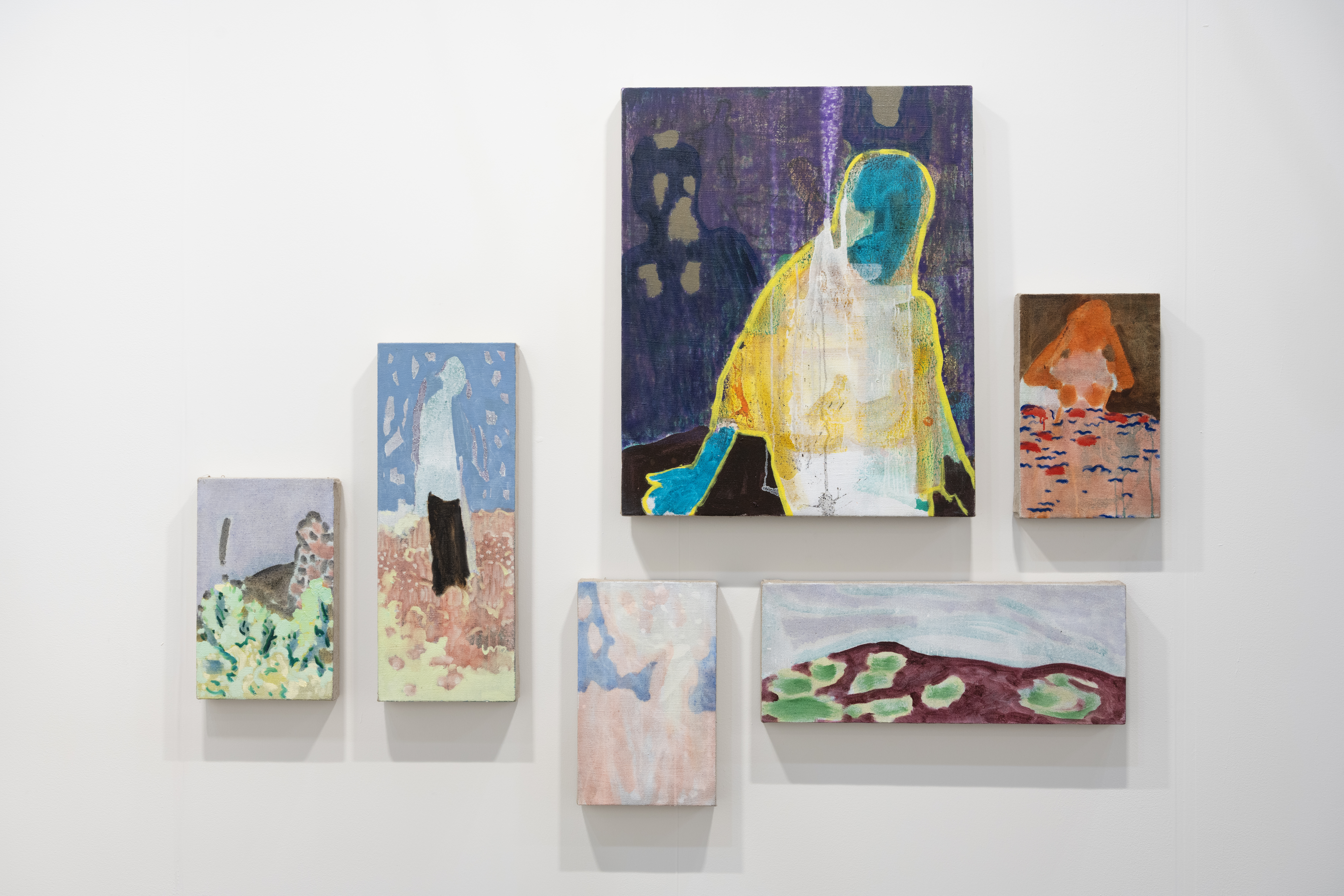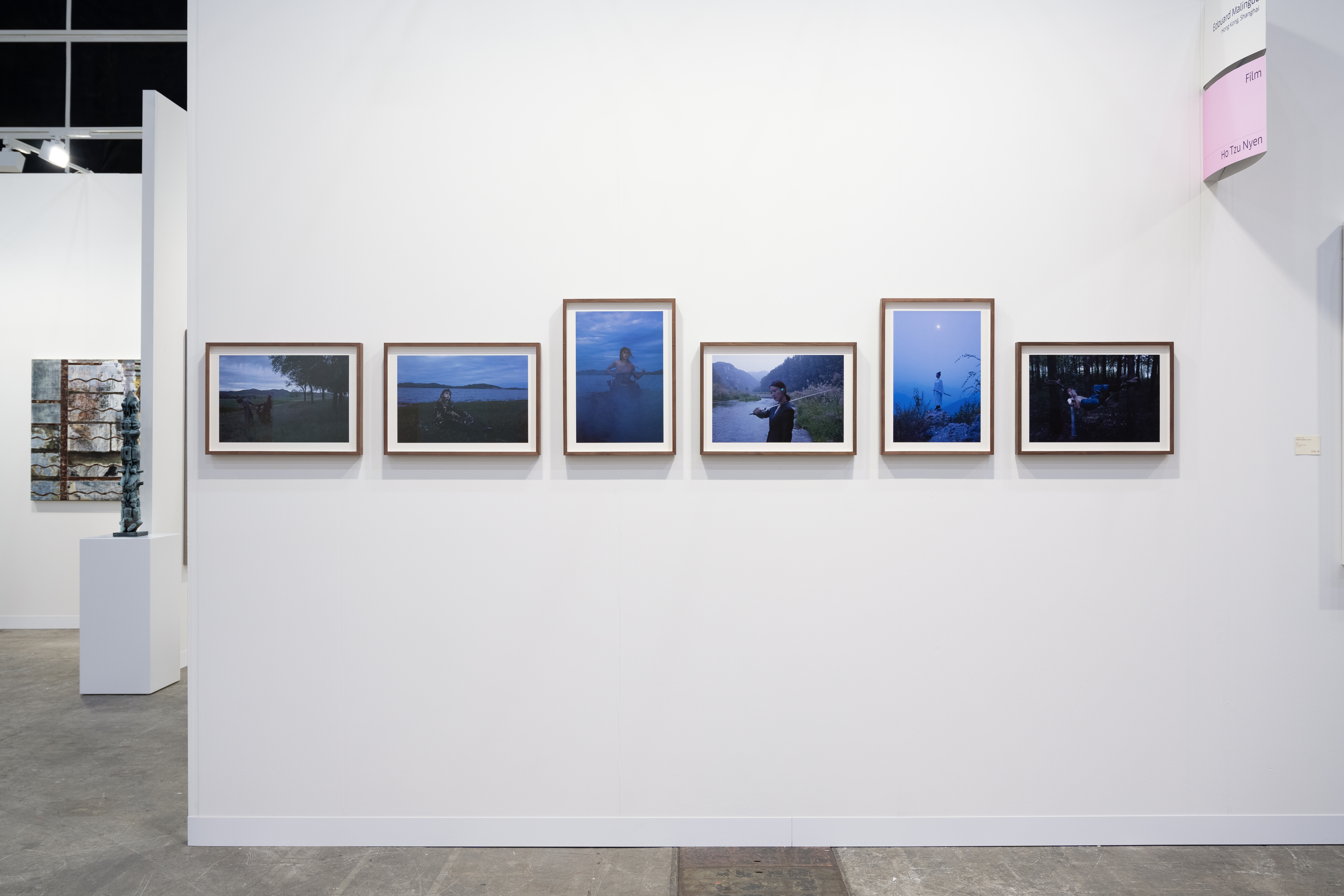Edouard Malingue Gallery is pleased to present at Art Basel Hong Kong 2021 works created by Eric Baudart (b. 1972, France), Chou Yu-Cheng (b. 1976, Taiwan, China), He Yida (b. 1980, China), Brook Hsu (b. 1987, U.S.A.), Ko Sin Tung (b. 1987, Hong Kong, China), Liu Xiaohui (b. 1975, China), Liu Yin (b. 1984, China), Nabuqi (b. 1984, China), Rosalind Nashashibi (b. 1973, U.K.), Tao Hui (b. 1987, China), Samson Young (b. 1979, Hong Kong, China), Yu Ji (b. 1985, China), Yuan Yuan (b. 1973, China) and Zheng Zhou (b. 1969, China).
Delicately transposed, it’s the displaced materiality in Eric Baudart’s (b. 1972) works that spurs their contemporary resonance. Honey-combed plastic, millimeter paper, adhesive tape – everyday, commonplace utensils are flushed of everyday contextualisation and repurposed to create oeuvres that titter on the edge of artifice.
Modified, shifted or transferred elements amounting to new relationships between status and object: herein lies the pulse of Chou Yu-Cheng’s (b. 1976) practice that builds, across multiple mediums, a subtle critique of mass media, institutions and the mechanisms that produce them. Through his selective conversations, Chou shapes a minimal yet deliberate set of intellectual and aesthetic tricks, which ultimately play on the properties of art, object and space.
He Yida’s (b. 1980) practice is not just an exploration of the language of sculpture, but also a reexamination of our cognitive process of familiar urban elements. Focused on presentation and representation, He juxtaposes actuality and image of things, which challenge the way idea forms.
Brook Hsu (b. 1987) is known for interweaving the fantastical, the mythopoetic and the autobiographical through an array of mediums, creating a distinct species of apparitional, haunting imagery. Her art, which focuses on examining pre-Christian myths, histories, modern literature, films and personal histories is at once psychedelic and tranquil, revealing the ways in which existing narratives can induce fear, anxiety, joy and sadness in the contemporary time.
Ko Sin Tung (b. 1987) observes the city’s inhabitants, their close-quarters, and identifies with curiosity their values as dictated through the items they treasure and keep, slowly exploring how these objects mirror ways of life, or in the very least, illustrate what is expected for living.
Liu Xiaohui’s (b. 1975) creative practice focuses on a search for precision and “truth” through a constant experience of repetition in painting. For him, the act of painting is at once the construction of artistic experience, and life’s dissolution of said experience. It is within the intersecting generation and fusion between the two that the true significance of painting is revealed with clarity.
Liu Yin’s (b. 1984) darkly humoured images reflect upon our ever-growing complacent approach to media consumption. Liu changes what we see through imposing heavily stylised, fantastical, manga-style eyes and backgrounds to these found images, bringing to light the falsity of the image as the bearer of truth in our current age of fast-paced media.
What we perceive as real, the psychological nature of how we engage with objects and material, are running threads throughout the works of Nabuqi (b. 1984). Ranging from handmade sculptures to installations made from assembling readymades, there is a pull for the viewer to engage with detail and context, to be attuned to and reflect upon the spectrum between artificial and actual.
Rosalind Nashashibi‘s (b. 1973) films use both documentary and speculative languages, where real-life observations are merged with paintings, fictional or sci-fi elements to propose models of collective living. Her paintings likewise operate on another level of subjective experience, they frame arenas or pools of potential.
Tao Hui (b. 1987) traversed into the art of video and installation, drawing from personal memories, visual experiences and popular culture to weave an experimental visual narration, the focus of which is often our collective experience. Running throughout his work is a sense of misplacement vis-à-vis social identity, gender status, ethnicity and cultural crisis, prompting the audience to face their own cultural histories and living conditions.
Multicultural paradigms, weaved into a symphony of image and sound, are at the heart of Samson Young’s (b. 1979) practice. With a formal cross-cultural training in music composition, Young channels his attunement to melody by pushing it’s formalist boundaries to create innovative cross-media experiences that touch upon the recurring topics of identity, war and literature.
Taking materiality of the media she employs as the starting point and sculpture as her essential media, Yu Ji (b.1985) has been developing and enriching her own vocabulary of art. Her performances that happen together with exhibitions of her sculptures, reflecting and moderating the fragile presence of human and objects in its everyday environment, often turn the space of art into the site of labor work.
Yuan Yuan (b. 1973), has earned international critical acclaim through his distinctive paintings, executed with impeccable technique and conveying a unique atmosphere. His subjects are often interior, which are based on real places, but with imaginary elements added to impose Yuan Yuan’s own system of design. All share a sense of abandonment, offering just a glimpse of their former glory.
Delineated contours, a subconscious blur of decipherable imagery and extraneous elements, a wistful expressive tide between the figurative and the abstract; Zheng Zhou (b. 1969) is a painter of instinct, conveying onto canvas observations from the world, as ad hoc as they may be. His strokes, furtive yet decisive, depict an urgency – to grasp, to depict, to capture that mesmeric multitude of the cosmos, the ‘phenomena’ we, or more precisely he, is a witness to.
///
Film Sector
Additionally, we are delighted to present Ho Tzu Nyen’s (b. 1976, Singapore) film, ‘R for Resonance’ (2019) at the Film Sector of Art Basel Hong Kong. A plethora of historical references dramatised by musical scores and allegorical lighting make up the pillars of Ho Tzu Nyen’s complex practice that primarily constitutes video and installation. Features in their own right, each work unravels unspoken layers of Southeast Asian histories whilst equally pointing to our own personal unknowns. The term Southeast Asia is, in itself a heterogeneous region that has never been unified by language, religion or political structures. Nevertheless, beneath the delineations drawn up by geopolitical forces, are ‘minor’ threads that weave the region together in strange, unexpected patterns. One such ‘minor’ thread is the gong, which is a ubiquitous ritual and musical object found in pre-colonial cultures across Southeast Asia. The story of gongs in Southeast Asia spans more than 3,000 years of history. ‘R for Resonance’ is a story of the Gong in Southeast Asia, told not through words, but as an experience in Virtual Reality, in which one experiences a sequence of “virtual objects”, by which these narratives and speculations are sensed – not by reason, but by resonance.
Art Basel Hong Kong 2021 Eric Baudart, Chou Yu-Cheng, Brook Hsu, Ko Sin Tung, Nabuqi, Tao Hui, Samson Young, Yu Ji, Yuan Yuan, Zheng Zhou, Rosalind Nashashibi, Liu Yin
